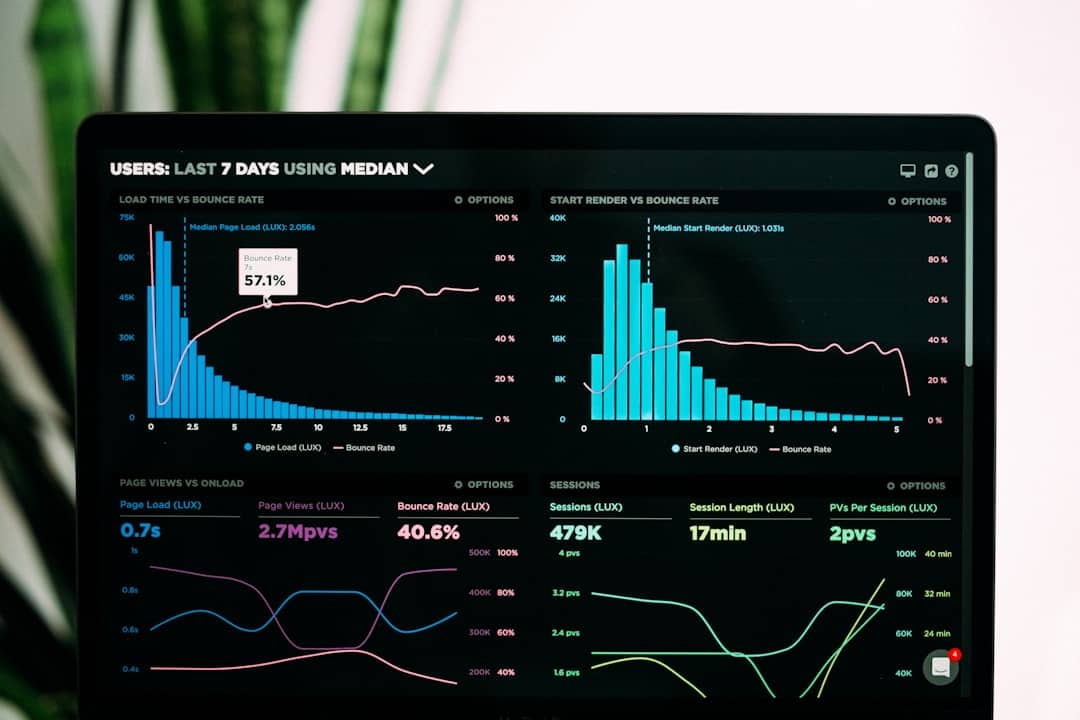Market sentiment analysis is a critical component of financial decision-making, providing insights into the collective attitudes and emotions of investors toward a particular asset or market. This analysis goes beyond traditional metrics, such as price movements and trading volumes, to delve into the psychological factors that drive market behavior. By gauging the mood of the market, analysts can better understand the underlying forces that influence price fluctuations, enabling them to make more informed predictions about future trends.
The essence of market sentiment lies in its ability to capture the often irrational nature of human behavior, which can lead to significant market movements that are not always justified by fundamental data. In recent years, the rise of social media and online forums has transformed the landscape of market Sentiment Analysis. Investors now have access to a wealth of information and opinions shared by their peers, which can significantly impact their perceptions and decisions.
This democratization of information has led to the emergence of new tools and methodologies for analyzing sentiment, allowing traders and analysts to tap into the collective consciousness of the market. As a result, understanding market sentiment has become an essential skill for anyone looking to navigate the complexities of modern financial markets, where emotions can often drive prices more than traditional economic indicators.
Key Takeaways
- Market sentiment analysis involves analyzing the emotions and attitudes of market participants towards a particular asset or market.
- AI is revolutionizing market sentiment analysis by enabling the processing of large volumes of data and the identification of patterns and trends in market sentiment.
- Market sentiment can have a significant impact on financial markets, influencing asset prices and market volatility.
- Market sentiment analysis plays a crucial role in predicting market trends and identifying potential investment opportunities.
- AI can be used for real-time market sentiment analysis, providing traders and investors with up-to-date insights into market sentiment and trends.
How AI is Revolutionizing Market Sentiment Analysis
Revolutionizing Market Sentiment Analysis with AI
Artificial intelligence (AI) is transforming the landscape of market sentiment analysis by providing unparalleled capabilities in processing vast amounts of data and extracting meaningful insights. Traditional methods of sentiment analysis often relied on manual interpretation of news articles, social media posts, and other textual data, which could be time-consuming and prone to human error.
Enhanced Accuracy and Speed with AI-Driven Sentiment Analysis
With advancements in natural language processing (NLP) and machine learning algorithms, AI can now analyze sentiment at an extraordinary scale and speed. This allows for real-time assessments of market mood, enabling traders to react swiftly to shifts in sentiment that could impact their investment strategies. Moreover, AI-driven sentiment analysis tools can identify nuanced emotional cues within text that may be overlooked by human analysts.
Uncovering Nuanced Emotional Cues and Public Perception
AI-driven sentiment analysis tools can discern between positive and negative sentiments expressed in social media discussions or news headlines, providing a more comprehensive view of market sentiment. By leveraging AI’s ability to analyze unstructured data from diverse sources—such as Twitter feeds, financial news articles, and online forums—investors can gain a deeper understanding of how public perception is evolving. This technological advancement not only enhances the accuracy of sentiment analysis but also empowers investors to make data-driven decisions based on real-time insights.
The Impact of Market Sentiment on Financial Markets

Market sentiment plays a pivotal role in shaping financial markets, often acting as a catalyst for price movements that may not align with fundamental valuations. When investor sentiment is overwhelmingly positive, it can lead to bullish trends where prices rise rapidly, sometimes creating asset bubbles driven by speculation rather than intrinsic value. Conversely, negative sentiment can trigger panic selling, resulting in sharp declines in asset prices as investors rush to exit their positions.
This phenomenon underscores the importance of understanding market psychology; it is not merely the economic fundamentals that dictate market behavior but also the emotions and perceptions of investors that can lead to significant volatility. The impact of market sentiment extends beyond individual assets; it can influence entire sectors and even broader indices. For example, during periods of economic uncertainty or geopolitical tensions, negative sentiment can permeate the market, leading to widespread sell-offs across various asset classes.
Conversely, positive news or developments can create a wave of optimism that lifts multiple sectors simultaneously. As such, investors who are attuned to shifts in market sentiment can position themselves advantageously, capitalizing on trends before they become apparent through traditional analytical methods. Understanding this dynamic interplay between sentiment and market movements is crucial for anyone looking to navigate the complexities of investing.
The Role of Market Sentiment in Predicting Market Trends
| Market Sentiment Metric | Description |
|---|---|
| Bullish Percentage | The percentage of investors and traders who are optimistic about the market’s future direction. |
| Put/Call Ratio | A ratio that compares the number of put options to call options, used to gauge market sentiment. |
| Volatility Index (VIX) | A measure of market expectations of near-term volatility conveyed by S&P 500 stock index option prices. |
| Investor Confidence Index | An index that measures the level of confidence that investors have in the stock market. |
Market sentiment serves as a valuable tool for predicting future trends within financial markets, offering insights that can complement traditional technical and fundamental analysis. By monitoring shifts in investor attitudes and emotions, analysts can identify potential turning points or continuations in market behavior. For instance, a sudden surge in positive sentiment surrounding a particular stock may indicate an impending rally, while a decline in sentiment could foreshadow a downturn.
This predictive capability is particularly useful in volatile markets where rapid changes in sentiment can lead to swift price movements. Furthermore, the integration of sentiment analysis into predictive models enhances their robustness by incorporating qualitative factors that traditional metrics may overlook. By combining sentiment data with quantitative indicators such as price trends and trading volumes, analysts can develop more comprehensive forecasts that account for both rational and emotional drivers of market behavior.
This holistic approach allows investors to make more informed decisions based on a broader understanding of market dynamics, ultimately improving their chances of success in an increasingly complex financial landscape.
Using AI for Real-time Market Sentiment Analysis
The advent of AI has enabled real-time market sentiment analysis, transforming how investors monitor and respond to shifts in market mood. With the ability to process vast amounts of data from multiple sources instantaneously, AI-driven tools can provide up-to-the-minute insights into investor sentiment. This immediacy is crucial in today’s fast-paced trading environment, where even minor changes in sentiment can lead to significant price fluctuations.
By harnessing AI technology, traders can stay ahead of the curve, making timely decisions based on the latest sentiment trends rather than relying on outdated information. Moreover, real-time sentiment analysis powered by AI allows for greater granularity in understanding market dynamics. Investors can track sentiment across different demographics or geographic regions, identifying variations that may influence local markets or specific sectors.
For example, a surge in positive sentiment among retail investors on social media platforms could signal a potential buying opportunity for certain stocks. By leveraging AI’s capabilities to analyze these nuanced trends in real time, investors can refine their strategies and enhance their overall performance in the market.
The Importance of Emotional Analysis in Market Sentiment

Understanding the Role of Emotions in Market Sentiment Analysis
Emotional analysis is a critical aspect of market sentiment analysis that delves into the psychological factors influencing investor behavior. Understanding emotions such as fear, greed, optimism, and pessimism is essential for interpreting market movements accurately. These emotions often drive irrational decision-making, leading investors to act against their best interests during periods of volatility.
The Impact of Emotions on Investor Decision-Making
For instance, fear can lead to panic selling during market downturns, while excessive greed may result in overexuberance during bull markets. By analyzing these emotional undercurrents, investors can gain valuable insights into potential market reactions and adjust their strategies accordingly. Furthermore, emotional analysis enhances the predictive power of market sentiment by identifying patterns that may not be immediately apparent through traditional metrics alone.
Recognizing Emotional Signals in Market Sentiment
For example, a spike in negative sentiment following disappointing earnings reports may indicate a broader trend of investor anxiety that could persist beyond the initial reaction. By recognizing these emotional signals early on, investors can position themselves strategically to mitigate risks or capitalize on opportunities as they arise.
Integrating Emotional Analysis into Market Sentiment Assessments
Ultimately, incorporating emotional analysis into market sentiment assessments allows for a more nuanced understanding of investor behavior and its implications for financial markets.
Strategies for Incorporating Market Sentiment Analysis into Financial Decision Making
Incorporating market sentiment analysis into financial decision-making requires a strategic approach that balances quantitative data with qualitative insights. One effective strategy is to establish a systematic framework for monitoring sentiment across various channels—such as social media platforms, news outlets, and financial forums—while integrating this information with traditional analytical methods. By creating a comprehensive view of market sentiment alongside fundamental and technical indicators, investors can make more informed decisions that account for both rational analysis and emotional factors.
Additionally, employing AI-driven tools for sentiment analysis can significantly enhance this process by automating data collection and providing real-time insights. Investors should consider leveraging these technologies to identify emerging trends or shifts in sentiment that may impact their portfolios. Furthermore, it is essential to remain adaptable; as market conditions evolve and new information becomes available, investors should be prepared to reassess their strategies based on updated sentiment analyses.
By embracing a dynamic approach that incorporates both quantitative rigor and qualitative understanding of market psychology, investors can navigate the complexities of financial markets with greater confidence and success.
For those interested in the intersection of technology and finance, understanding the sentiment in financial markets can be crucial. While the links provided primarily focus on the metaverse and its various aspects, they do not directly address financial sentiment analysis. However, exploring the metaverse, as discussed in Exploring the Metaverse: A New Frontier in Digital Reality, can indirectly relate to financial sentiment by highlighting how emerging technologies impact investment and market perceptions. This article could provide a foundational understanding of the metaverse, which is increasingly relevant in discussions about digital economy investments and financial sentiment.
FAQs
What is financial sentiment analysis?
Financial sentiment analysis is the process of using natural language processing, text analysis, and computational linguistics to extract and analyze sentiment from financial news, social media, and other sources of textual data. It aims to understand and quantify the sentiment of market participants towards a particular financial asset or market as a whole.
How is financial sentiment analysis used in finance?
Financial sentiment analysis is used in finance to gauge market sentiment, predict market movements, and make investment decisions. It can help investors and traders to understand the mood of the market, identify potential risks and opportunities, and adjust their investment strategies accordingly.
What are the key components of financial sentiment analysis?
The key components of financial sentiment analysis include data collection from various sources such as news articles, social media posts, and financial reports, natural language processing techniques to analyze the sentiment of the collected data, and machine learning algorithms to predict market movements based on the sentiment analysis.
What are the challenges of financial sentiment analysis?
Challenges of financial sentiment analysis include the noise and ambiguity in textual data, the need for accurate sentiment analysis algorithms, the speed of data processing, and the integration of sentiment analysis with other financial analysis techniques.
What are the benefits of financial sentiment analysis?
The benefits of financial sentiment analysis include improved understanding of market sentiment, better prediction of market movements, identification of potential investment opportunities and risks, and the ability to make more informed investment decisions.

Leave a Reply